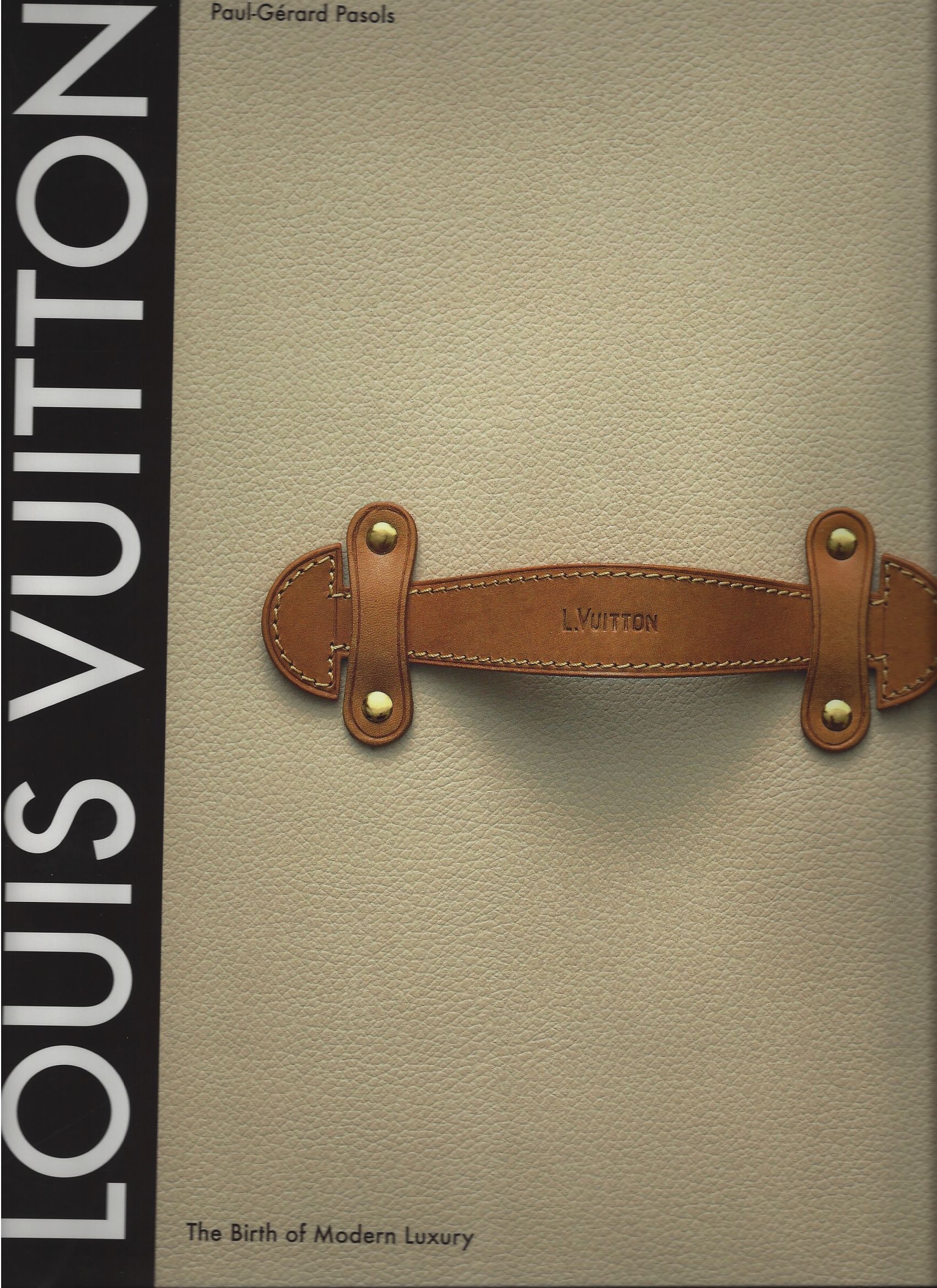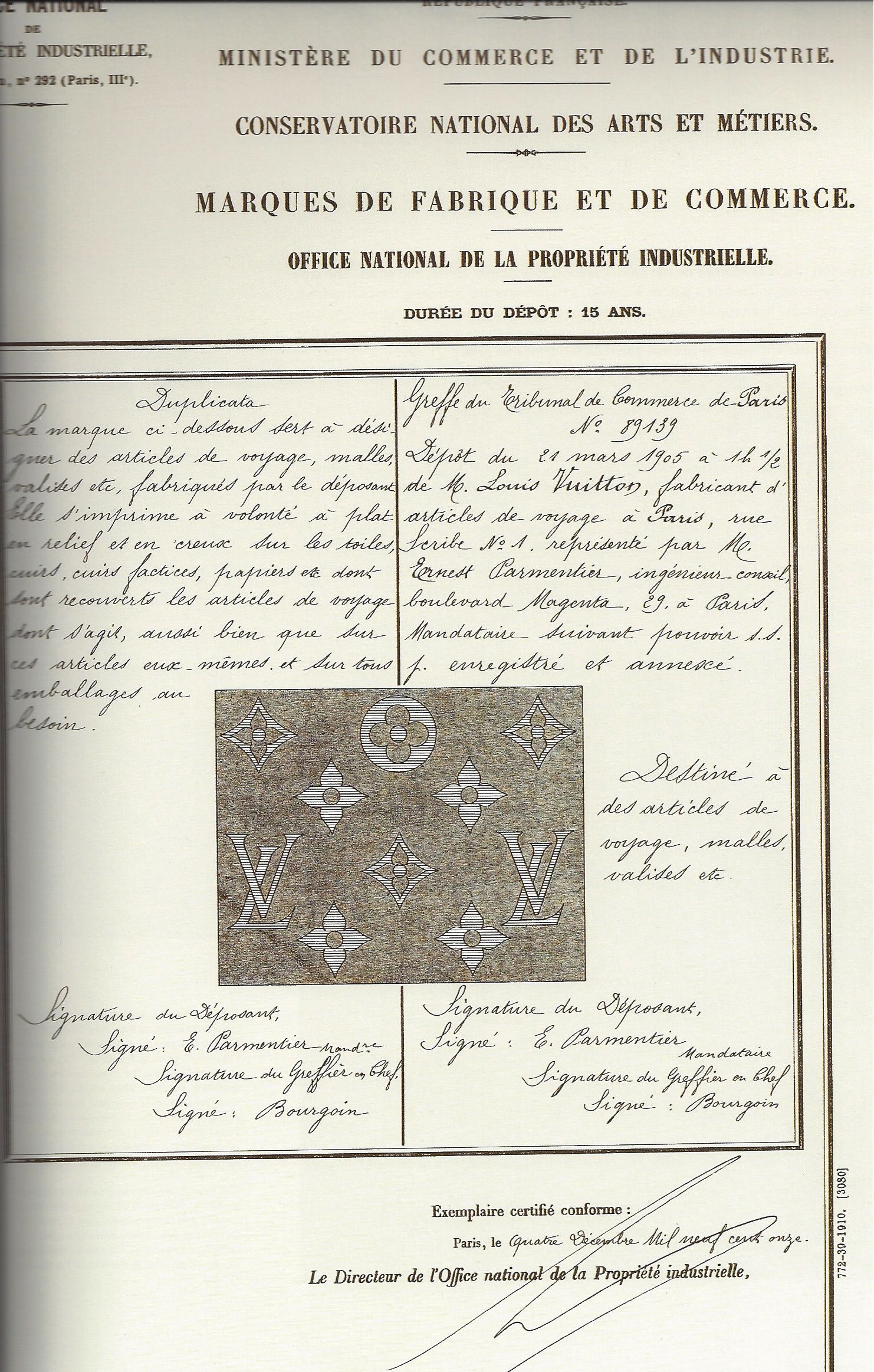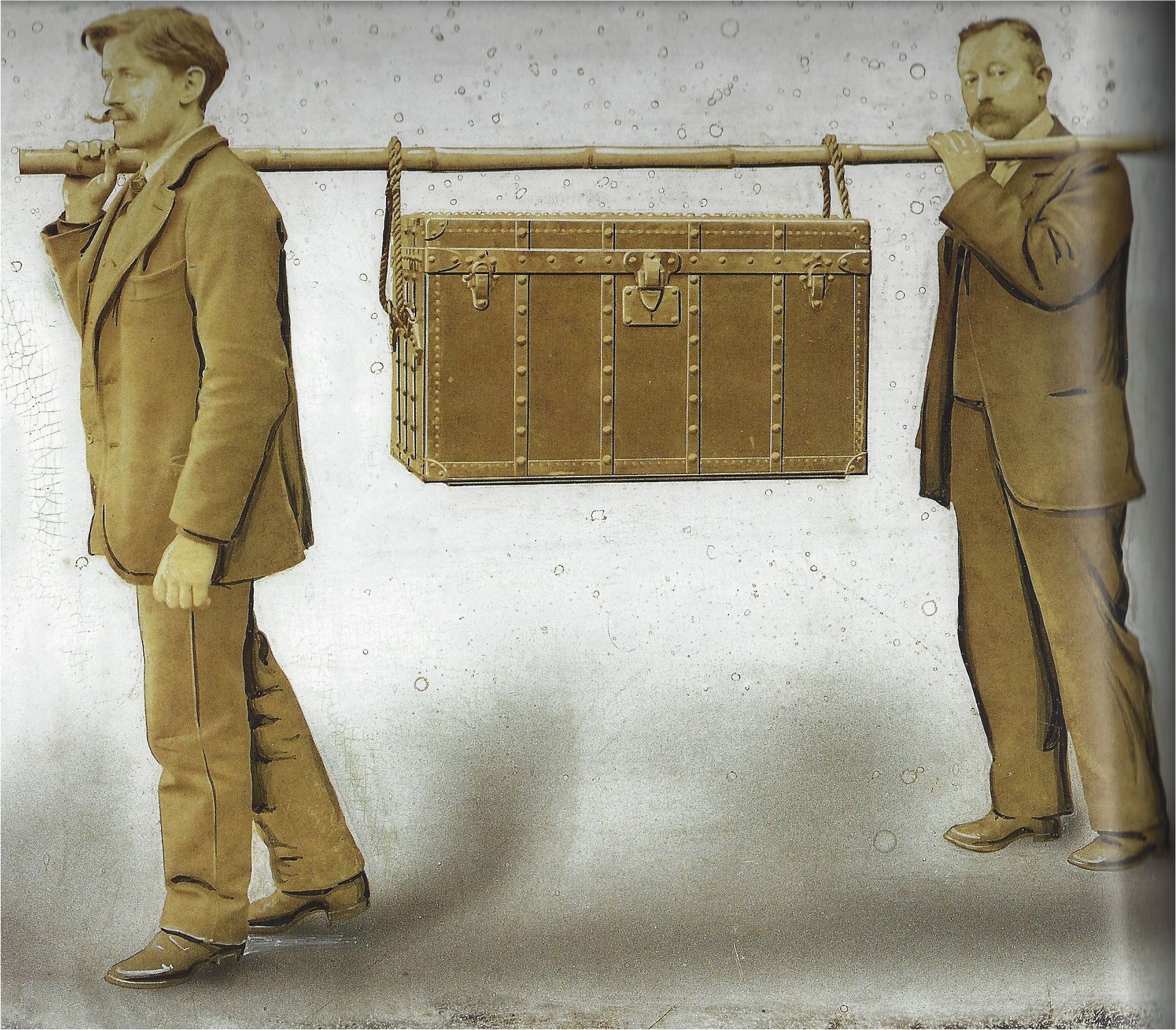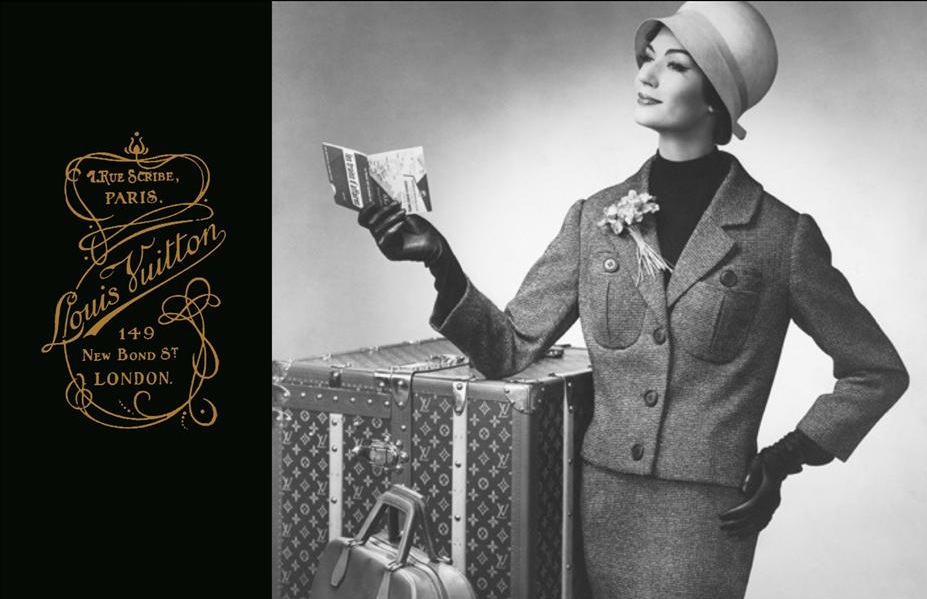Each trunk: 19 in (48 cm) high, 43 in (110 cm) wide, 22 in (55 cm) deep
cf. Paul-Gérard Pasols, Louis Vuitton: The Birth of Modern Luxury, 2005, pp.122-123
The design of the Monogram canvas, created by Georges Vuitton in 1896, combines geometric and botanical motifs with the monogram of the company’s founder – the interlaced initials of Louis Vuitton. Its strong graphic style is based on a rhythmic interplay of horizontal and oblique lines that draw two incomplete triangles – almost identical but inverted, so the base of the L supports the point of the V. The first floral motif is the brown star with four curved points. The second floral motif is the reverse image of the four-pointed star – light beige points or petals with a dark beige dot in the centre. The last motif is a brown four-petal flower inside a light beige circle. At the centre of the flower is another small light beige circle or dot. The Monogram pattern (that became the company emblem in 1896) can perhaps be seen as a coat of arms, its elements mimicking the rules and traditions of heraldry. In its simple structure it echoes a feudal coat of arms, designed to be visible from a distance. Furthermore, the Monogram’s motifs appear in works by various civilizations, from the 4th to the 19th century. For example, the same motifs can be found on the Doge’s Palace in Venice, in quatrefoils rendered in stone.
By the close of the 19th century, Louis Vuitton deserved to be proud of his success. Maison Louis Vuitton was well-established, and its skill and innovation had transformed the art of travelling. Its customers included Tsar Nicholas II and the Tsarina, Fuad I, son of Isma’il Pasha and King of Egypt, Sarah Bernhardt and King Alfonso XIII of Spain.



























